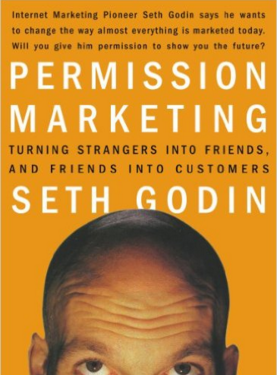On the heels of my wildly popular “HOW TO SETUP LEAD CAPTURE WITH A .PDF“,
I showed you how to properly grow your mailing list by offering up something of quality in exchange for their email address. I always set it up as double opt in. That means before you go on my list you’ll need to confirm your subscription. If I didn’t, adding them to my list and sending them crap would constitute spam (legally).
Did you know I have a website called Newsletters I never signed up for?
Remember: Spam kills kittens.

So I came across this spam in my inbox and while I’ll add him to the Newsletter of Shame list, I also discovered the very sneaky way I was added to his list. It was so devious I just have to expose it for all to see. You just have to see it to believe it!
HOW NOT TO BUILD A EMAIL LIST
Here’s the email as it came to my inbox.

It looks just like much of the other spam I get on a daily basis. Typically what I do when I see something like this is either delete it, mark it as spam, or unsubscribe.
Warning: For some spam, unsubscribing might actually do the opposite and notify the list owner that they have a real live person that’s opening their email. They can sell verified email lists of people like you for big bucks which means by unsubscribing you’ll actually see a burst of more spam from many others who bought your name on a list.
In this case, I know the sender is an actual person (“marketer”) so I clicked the unsubscribe button at the bottom.
He’s using MailChimp and he named his list in a way that probably made sense to him. He wasn’t thinking that anyone would see the name of the list. It’s clearly visible on the MailChimp Unsubscribe Page (http://bormioproperties.us3.list-manage.com/unsubscribe/post).

Apparently, he exported all his Linkedin Contacts on 3/29 and then uploaded them straight into his MailChimp account.
Did you know you can do that? It’s easy.
Just go to https://www.linkedin.com/people/export-settings and you’ll see this.

Simply export the .CSV file, then click on the import function in MailChimp. Map a few fields and you’ll have a huge list of people that never signed up for your unsolicited bulk emails!
While that might sound like a good idea, please don’t do it. This is totally against the rules. MailChimp doesn’t like this, nor does any other email list service. The Can Spam Act doesn’t either.
 The amazing thing is this is what shows up for his email address on my sidebar. I use Rapportive for Gmail to see this.
The amazing thing is this is what shows up for his email address on my sidebar. I use Rapportive for Gmail to see this.
This makes me want to take a shower and scrub really really hard with very hot water and killer soap. Ewwwwwwww!
So we’re a coach?
We’re a real estate educator?
We’re teaching others to do this as well?
Please don’t. Just don’t.
Instead, build your list using lead capture like I mentioned or by providing quality content on a regular basis. Encourage people to sign up for your list in any way you like (thinking buttons, links or popups). When you do, make them double opt in so that you know each and every one of them really want to be on that list.
Bonus: Once they sign up for your list it’s a moment of trust. I’m going to give you a few quotes to guide you. You’ll notice they all come from the same person. They also come from the same book. Read each one slowly until you grasp the full meaning.
 “Permission marketing is the privilege (not the right) of delivering anticipated, personal and relevant messages to people who actually want to get them.” — Seth Godin
“Permission marketing is the privilege (not the right) of delivering anticipated, personal and relevant messages to people who actually want to get them.” — Seth Godin
“In order to get permission, you make a promise. You say, ‘I will do x, y and z, I hope you will give me permission by listening.’ And then, this is the hard part, that’s all you do.” — Seth Godin
The goal of the Permission Marketer is to move consumers up the permission ladder, moving them from strangers to friends to customers. And from customers to loyal customers. At every step up the ladder, trust grows, responsibility grows, and profits grow.” — Seth Godin
“The promise is the promise until both sides agree to change it. You don’t assume that just because you’re running for President or coming to the end of the quarter or launching a new product that you have the right to break the deal. You don’t.” — Seth Godin
“Real permission is different from presumed or legalistic permission. Just because you somehow get my email address doesn’t mean you have permission. Just because I don’t complain doesn’t mean you have permission. Just because it’s in the fine print of your privacy policy doesn’t mean it’s permission either.” — Seth Godin
Oh and I almost forgot…
[maxbutton id=”13″]
- The Ultimate Guide to Writing the Perfect Blog Post - March 14, 2023
- 8 Questions Your Web Developer Should Have Asked - April 27, 2021
- Slack, Chat or Discord? - April 6, 2021